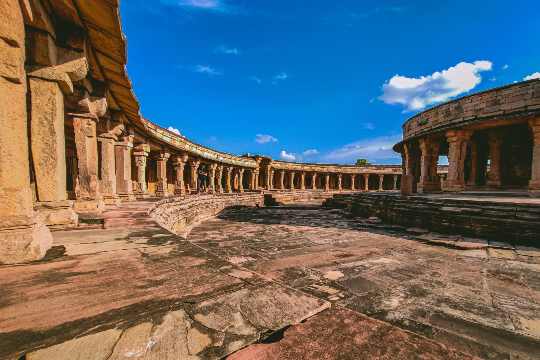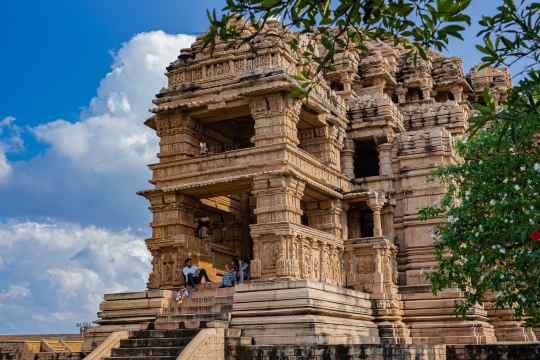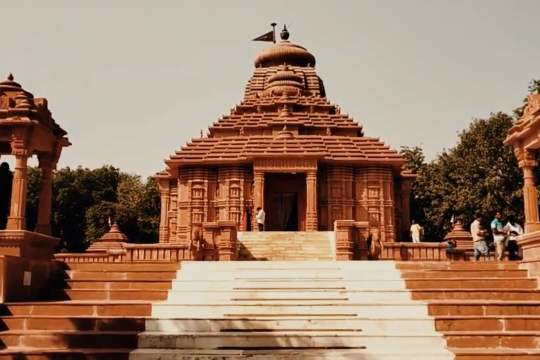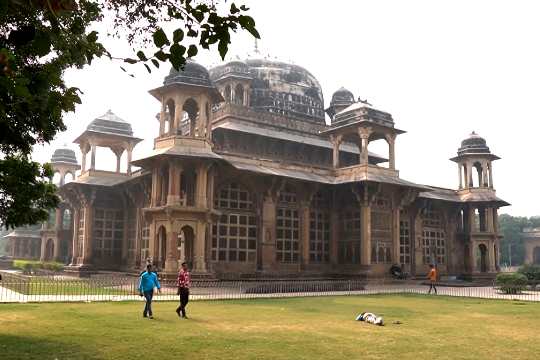Gwalior Travel Guide
Explore the Historical City of Gwalior: A Travel Guide
Gwalior is a historic city located in the northern state of Madhya Pradesh in India. It is known for its rich cultural heritage and historical landmarks, making it a popular destination for travelers and history enthusiasts.
One of the most notable landmarks in Gwalior is the Gwalior Fort, which was built in the 8th century by the Rajput rulers. The fort is a fine example of Rajput architecture and is known for its massive walls, gates, and bastions. The fort also houses several important structures, including the Man Singh Palace and the Teli-ka-Mandir Temple.
Another popular attraction in Gwalior is the Jai Vilas Palace, which was built in the 19th century by the Scindia rulers. The palace is known for its opulent architecture and is a popular destination for tourists.
In addition to its historical landmarks, Gwalior is also known for its local cuisine. The city is famous for its spicy dishes, such as dal bafla and bhutte ki kees, which are popular among both locals and visitors alike.
Overall, Gwalior is a fascinating destination that offers a unique blend of history, culture, and cuisine. Whether you're a history buff or just looking to explore a new city, Gwalior is worth a visit.
Speak to someone
who's been there

+91-9873003099
MAKE AN ENQUIRYBest Places To Visit In Gwalior
From historical cities to natural wonders, come see the best of Gwalior.

Gwalior Fort
One of the many hill forts in India, Gwalior Fort is situated on a huge rocky hill called Gopachal. Originally built in sandstone and lime mortar, the fort is one of the prominent structures of Gwalior. An architectural marvel of the 8th century, this imposing structure dominates the entire city of Gwalior. The fort has two palaces, 'Gujari Mahal' and 'Man Mandir', which were built by Raja Man Singh Tomar during the 15th century. It also has many temples, which were built by different kings at different times. Over the years, the fort has undergone many changes, but it remains an important marvel of Gwalior. The fort is also associated with an interesting legend and has a rich history behind it.

Jai Vilas Palace
The Jai Vilas Palace, also known as the Jai Vilas Mahal is situated in Gwalior, Madhya Pradesh and is a symbol of age-old Indian culture and opulence, preserved to the modern day. The Maharaja of Gwalior, Jayaji Rao Scindia, had this magnificent edifice built to ensure a grand welcome for King Edward VII, the then Prince of Wales in 1874. Today, it serves as a residence for the descendants of the royal Maratha Scindia family. The palace also serves as a museum stretched over 35 rooms, houses the Chitrangada Raje Art Gallery, and a library that comprises more than 5,000 books.

Padavali and Bateshwar
Situated around 40 km from the main town of Gwalior, Padavali is an fortress comprising many ancient temples. The temples have intricate carvings and one of the temples also have erotic carvings and is hence famous as mini Khajuraho. Overall, it's a good excursion from Gwalior to witness the grandeur of Indian architecture. These temples were discovered in 2005 as a result of excavation by the ASI and the archeological work is still going on. Most of the temples here are dedicated to Shiva and Vishnu. The temples are believed to built around the 8th-10th century AD and are built mainly using red sandstone.

Sas Bahu Temple
The Sas-Bahu Temple is located in the eastern side of Gwalior Fort. The irony lies in the fact that as the name suggests it is not the temple of sas (mother-in-law) and bahu (daughter-in-law). The name emerged out of ‘sastrabahu’ which is another name of Lord Vishnu. The Sas-Bahu Temple is dedicated to one incarnation of Lord Vishnu. It has carvings of Lord Brahma, Lord Vishnu and Godess Saraswathi on its door. There are two temple structures, one is small and the other is big. The temple is made of red sandstone with beautiful carvings of lotus. It has a pyramidal structure without any arches. It was built by King Mahipala of the Kachwaha dynasty in the 11th century.

Sun Temple
The Sun Temple is one of the most spectacular shrines as well as an architectural wonder that adorns the city of Gwalior. As the name suggests, the temple is dedicated to the holy Sun God and was constructed in the year 1988 by the famous industrialist G.D. Birla. Built on the lines of legendary Sun Temple at Konark, Orissa, the Sun Temple of Gwalior is a magnificent amalgam of exquisite architecture in red sandstone and pearly white marble. A splendid idol of the Sun Lord is enshrined in the temple, it is among the most revered shrines in the ancient city attracting tourists and devotees from all over the country in large numbers.

Teli ka Mandir
Teli ka Mandir Teli ka Mandir is an ancient temple which is undoubtedly famous for its splendid architecture. Teli Ka Mandir, located in the Gwalior Fort Complex, is easily accessible by local means of transport from Gwalior. The temple of Teli, built in the 11th century, incorporates Buddhist and Dravidian styles. Soaring up to a height of 100 feet, Teli Ka Mandir is the tallest and most stunning temple in the periphery of the Gwalior Fort. The temple is actually dedicated to Lord Vishnu in the form of his mount Garuda. The major attraction of Teli Ka Mandir is the huge image of 'Garuda' (Mountain of Lord Vishnu). This unusual image makes the gate enclosure the tallest structure in the Gwalior Fort.

Tomb of Tansen
Sufi saint Mohammed Ghaus's monumental tomb was built by Akbar and is a massive sandstone structure with rising towers on the four corners, crowned by cupolas and a huge central dome. One of the greatest musicians of India and en eminent vocalist in the courts of Akbar in the medieval period, Tansen was also among one of the nine gems of the Mughal court.

Gujari Mahal
Gujari Mahal is one of the famous archaeological museums of India located in Gwalior. The building is originally a palace built by Raja Man Singh for his wife Mrignayani, who was a Gujar. Thus the name of the palace was Gujari Mahal. In the year 1922, it was converted into a museum by the Department of Archeology. The museum has 28 galleries and 9000 artifacts. It has artifacts from the first century onwards. Precious stones, gems, terracotta objects, weapons, artifacts, sculptures, paintings, inscriptions, pottery, etc. are displayed here. The wide range of sculptures in the Gujari Mahal museum include the world famous Shalabhanjika Yakshi, Trimurti Nataraja Ardhanareshwar and Yamaraj.

Gwalior Zoo
Gwalior is an exciting city with a rich heritage, Established in 1922 by the royal family Madho Rao Scindia, Gandhi Zoo is actually a section of a larger garden known as Phool Bagh and houses various rare species of animals. Rare and protected species like gold cultivar, sambar, bison, hyena, spotted deer, black buck and white tiger are included.
Best Travel Packages For Gwalior
Find the best deals on Gwalior Tour Packages for solo, family & group travelers.
Looking for a custom trip plan?
It only take 2 minutes to plan your own holiday itinerary.

